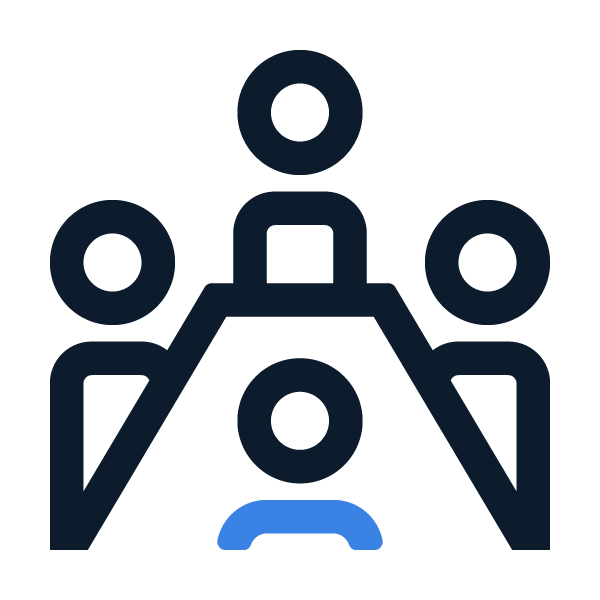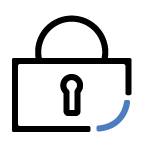What Are the Internet Enablers?
A robust, healthy Internet relies on foundational architecture and practices. It also needs a set of operating principles that contribute to its growth as a network for all. We call these the Internet Goals and Enablers. Anyone who creates or influences policies, trends, or business decisions can have an impact on these principles. This introduction can help you understand whether a policy or decision is working toward or against each of them.
Open
The Internet uses what’s called a voluntary interconnection model. The way systems are networked together is based on a set of intentional choices. One of those choices is that the Internet should be open, which means that anyone with some equipment and technical knowledge can interconnect a network, and they can choose the technologies that work best for them.
This is in contrast to something like the old telephone system monopoly, where a small number of large carriers decided who could build on its technologies, and how much everything cost. In many areas, you even had to rent your phone from the company.
When the Internet is open, users and organizations can expect:

Easy and unrestricted access
This refers to both the way networks can join the Internet without unnecessary restrictions or costs, and also to users, who should be offered an affordable way to connect. This even extends to digital accessibility guidelines such as WCAG 2.0.
If something undermines the ability of organizations to create networks or build on top of them, or if it makes the Internet inaccessible due to cost or access needs related to disability—such as a monopoly that makes the Internet too expensive—it doesn’t support the open Internet.

Unrestricted use and deployment of Internet technologies
People and organizations can mix and match technologies as they see fit. This means you can have any type of server in your data center or any kind of computer in your home, and it means you can use technologies like encryption where they’re needed.
One example of a technology that supports this principle is Oauth, a technology that allows users to sign into services using their credentials from another service, such as Google or Facebook, without having to share their password or create a new set of login details. This makes it easier for new things to be adopted and used.

Collaborative development, management, and governance
The Internet, as a set of practices, is managed and governed collaboratively. No one person or organization is in charge of its infrastructure, which is maintained through transparency and consensus. At its foundations, the Internet is based on sharing and community.
Community-managed Internet exchange points (IXPs) are an example of this principle in practice. IXPs are places where networks that participate in the Internet exchange traffic. This is known as peering. It has a range of benefits, but it also represents the community-driven foundations of the Internet itself.
Globally Connected
In a globally connected Internet, networks and organizations find it easy to connect without unnecessary barriers, and everyone who wants to use it has a fast, reliable, and affordable connection to the things they need—everywhere in the world.
This is undermined when, for example, users in a region have theoretical access to something like voice over IP (VoIP) services, but a government restricts that access because they want to control the price of long-distance phone calls.
When the Internet is globally connected, users and organizations can expect

Unrestricted reachability
At its simplest, if you’re on the Internet, you should be able to visit any website or service that’s available to you, and there’s no blocking of legitimate use of it.
This is undermined when, for example, a DNS provider decides to filter you away from or censor a website you want to reach. For the Internet to be globally connected, moderation should be done at the level of the content, not the network.

Available capacity
No one expects the Internet to have infinite capacity, but it should offer enough ports, bandwidth, and services for everyone to get what they need.
Internet exchange points (IXPs) also reflect this principle. By keeping traffic close to the users, an IXP can help to make connections cheaper, faster, and more reliable, increasing the capacity of the Internet, and users’ access to it.
Secure
A secure Internet makes it difficult for botnets and phishing scams that harm users. There are systems in place to prevent both deliberate and accidental harm to the infrastructure.
A number of policies around the world, even those that are framed around safety and security, actually make the Internet less secure. Anything that undermines the ability to use strong encryption, such as laws requiring content providers to unencrypt user traffic to scan it, even for legitimately illicit material, makes it difficult to keep any data confidential. This puts people, and even entire countries, at risk.
When the Internet is secure, users and organizations can expect

Data confidentiality of information, devices, and applications
This means that sensitive information can be transferred without unwelcome outsiders being able to find out who is communicating or what they’re sharing.
Services like encryption are vital for this principle. For example, the Payment Card Industry (PCI) Data Security Standard (DSS) is a global standard that requires data to be encrypted whether it’s in motion or at rest, protecting payment details at every stage of a transaction, and keeping everyone in the chain more secure.

Integrity of information, applications, and services
When you send information from one device, IP address, or service to another, it can’t be modified along the way. When it reaches its destination, the receiver can be confident that it was sent by the person it says it’s from, and that it’s what was actually sent.
Resource Public Key Infrastructure (RPKI) is part of what’s called routing security. It helps ISPs to validate the traffic they send and receive, reducing the risk of things like IP hijacking.
Trustworthy
The people who use the Internet know that a message they’re receiving came from the person it says it came from. They know no one has read it along the way. They know they’re able to access the Internet when they need it, and that services haven’t been blocked unnecessarily.
Governments around the world sometimes shut down Internet access in their country. It’s easy to see why this is negative, but it also has the effect of reducing the trustworthiness of the Internet overall. If it’s not available when people need it, it’s harder to trust that you can build a business or create an essential service that relies on it.
When the Internet is trustworthy, users and organizations can expect

Reliability, resilience, and availability
A resilient Internet is one that can resist or recover quickly from errors, malicious behavior, and any challenge to normal operations.
Even if users experience something like a weather-related outage, or a cable cut that reduces international traffic flow, they can be confident that service will resume as quickly as possible. We measure Internet resilience, and many of the dimensions that factor into it in our Internet Society Pulse platform.

Accountability
This means that organizations and institutions on the Internet can be identified and can be held responsible when needed. When website or service operators are transparent, this increases transparency, shows accountability, and contributes to trust.
For example, even if content isn’t available on a website because of a legal demand or sanction, there is an Internet mechanism that allows a website owner to signal this to a user. Rather than simply omitting the information, they’re able to be transparent about why it isn’t available.

Privacy
When users have strong privacy, it means they can understand and control the information that’s collected about them, and how it’s used and shared. It can include some aspects of anonymity, such as anonymous Internet browsing, or the ability for users to opt out of being tracked when they use a website.
A bill that forces a service to monitor and delete content, even if it’s legal, and even in private messaging—such as in the UK’s 2021 Online Safety Bill—means forcing services to surveil their users without any grounds. They’re forced to break end-to-end encryption that keeps communications and connections secure.